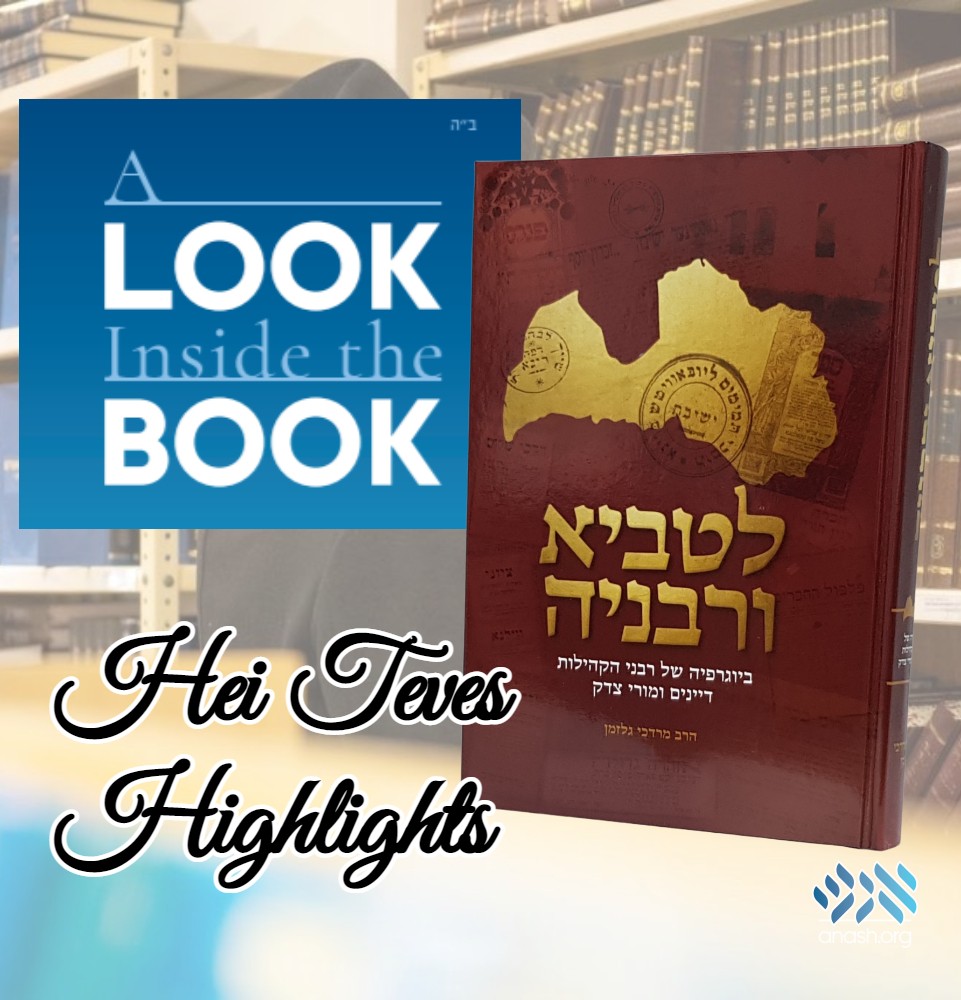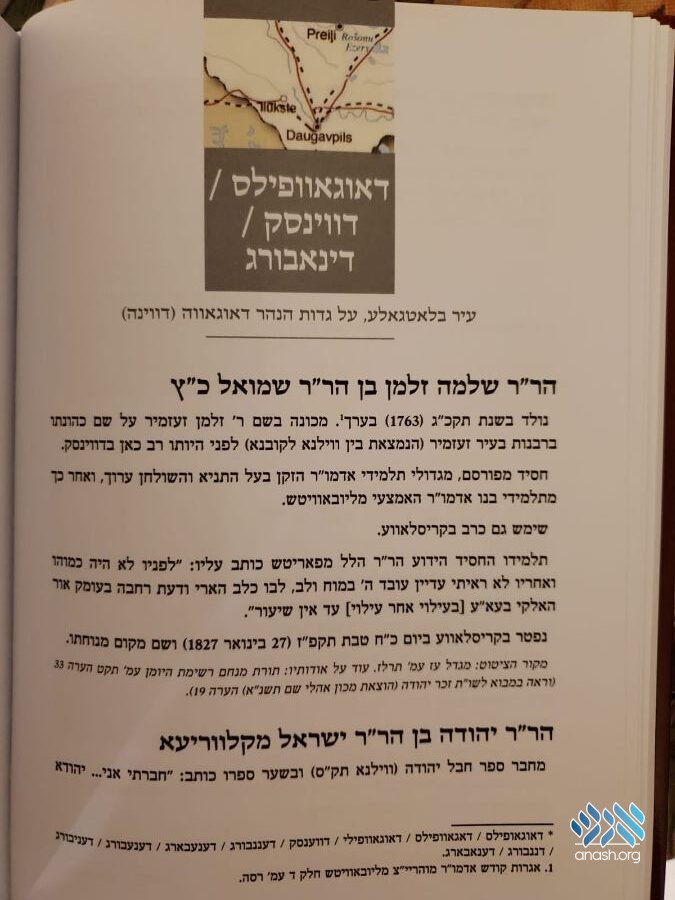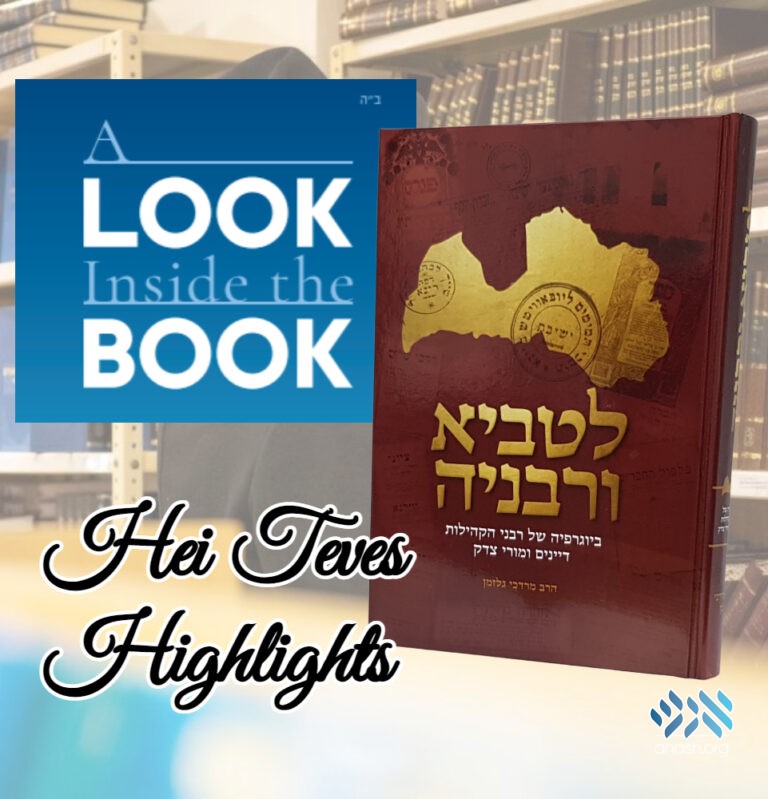ה׳ טבת ה׳תשפ״ב | December 8, 2021
Hei Teves Seforim Roundup: History
This special installment of the “A Look Inside the Book” column will review standout titles from this past year in the areas of history, halachah, renewed classics, and fiction.

This special installment of the “A Look Inside the Book” column will review standout titles from this past year in the areas of history, halachah, renewed classics, and fiction.
A Look Inside the Book is an Anash.org feature that takes a look at what’s new on the shelves of Seforim stores, and reviews recently printed seforim and books. The feature is sponsored by SeforimDeals.com
By Shmuel Super
Genre: History
Latvia Verabaneha
Rabbi Mordechai Glazman
Privately published
413 pages
The Jewish history in Latvia, which traditionally belonged to the Jewish geographical areas of Lita and Reisin, is long and rich. Latvia Verabaneha, written by Latvian shliach Rabbi Mordechai Glazman, is an encyclopedia of the rabbonim that served these communities for over 200 years, from around 5500 until the destruction of Latvian Jewry in the Holocaust.
Drawing on earlier rabbinical reference books, government archives, the shaalos uteshuvos literature, and the contemporary Jewish press, the author provides us with comprehensive documentation of the hundreds of rabbonim and morei tzedek of 61 cities and towns in the borders of modern Latvia.
Some of these rabbonim are famous household names, such as the Rogatchover Gaon and the Or Sameiach of Dvinsk, and Rav Avraham Yitzchak Kook, once the rov of Boisk, while others are almost unheard of today.
The Chabad history in Latvia is equally long and rich. Cities such as Dvinsk, Krislava, and Griva were Chabad strongholds. Great chassidim served as rabbonim in these communities, including famous figures such as R. Zalman Zezmir and R. Leib Batlan in Dvinsk, and lesser known names such as R. Naftali Hertz Klatzkin of Shimberg and R. Eliezer Don Yichye of Lutzin.
Chassidishe Rabbonim in Latvia from the previous generation include R. Yerachmiel Binyaminson in Grobin, and R. Yaakov Landa in Libau, later the rov of Bnei Brak. All are documented in this excellent work.
Latvia Verabaneha contains chapters on 61 cities and towns, in alphabetical order. Variant names and spellings are provided for each town, which is very helpful for anyone doing research. The Rabbonim are listed in chronological order, followed by dayanim and morei tzedek, as well as the official government-recognized functionaries, the rabbonim mitaam.
This is a reference book, not a storybook. The entries for each of the rabbonim are brief, rarely exceeding a single page. Each entry contains basic biographical information about the rov—his birth, teachers, places of residence, period of rabbonus, passing, and brief mention of any other notable points from his biography. Bibliographical information about seforim they published, teshuvos in which they are mentioned, and haskamos they gave are also provided.
The biographical information is supplemented by full-color photographs of the rabbonim, title pages of seforim, matzeivos, handwritten letters, autographs, stamps, and newspaper articles.
The author’s Chabad identity is reflected in the special attention he pays to the Chabad connections of the rabbonim profiled. This often includes little-known information, such as mentions of the Rebbeim in seforim. For example, in the entry for R. Mordechai Zelbovitz, a rov in Riga before the war, we learn that he is “ר”מ פאנדעלער” whose halachic kuntres the Rebbe wrote comments on (Reshimos, choveres 148) (335).
This incredibly thorough book reflects many years of careful research. The author pays attention to every detail, sometimes getting into lengthy discussions in footnotes about biographical details such as precise years of rabbonus. Indices of names and places are included.
The book is written clearly and generally clean of typos, with the exception of a few instances of mistaken translation of Hebrew dates, found between pages 269-281.
Latvia Verabaneha is a masterpiece in its genre, and will be greatly appreciated and enjoyed by researchers, and anyone with a keen interest in rabbinic history.
Latvia Verabaneha can be purchased here.
Previously reviewed history books: Yemei Melech, Sefer, Sofer, Vesipur (Mondshine), Hatamim Harishon, Benei Hatzemach Tzedek, and Introduction to the Talmud.
A Look Inside the Book is sponsored by SeforimDeals.com. Contents of the article are prepared by the author.
For previous articles in the series, click here.




We appreciate your feedback. If you have any additional information to contribute to this article, it will be added below.